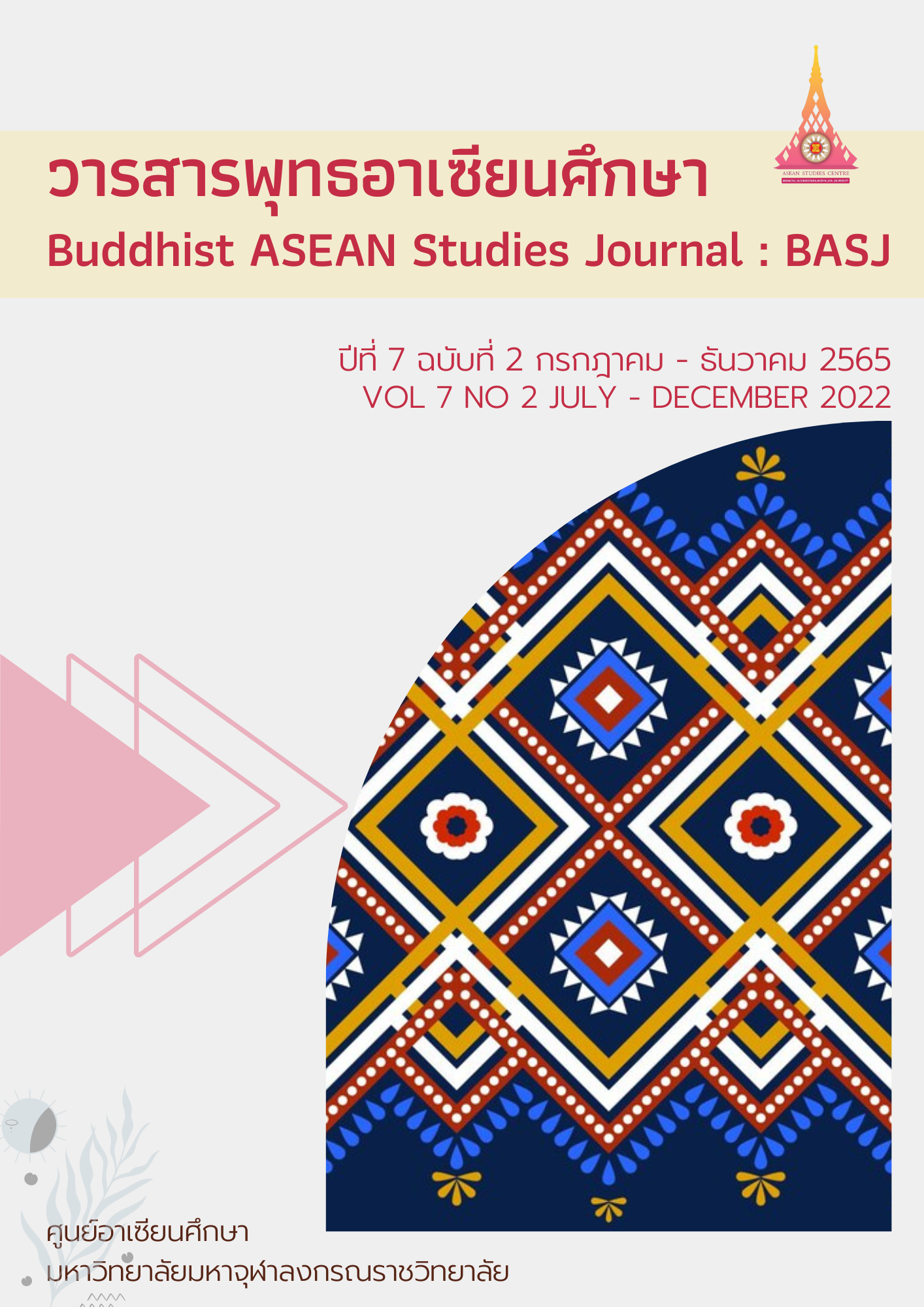Naga’s Fireballs: A Mysterious Phenomenon on Mekong River and Local Buddhists’ Trust
คำสำคัญ:
Naga, Fireball, Mysterious phenomenon, Mekong River, Local Buddhists, Trustบทคัดย่อ
It is undeniable that the Buddhism talks about Naga (a sacred snake) as it appeared legendarily in early Buddhism. The legend of Naga has strong effects to Buddhist Thai society, especially the Buddhists in Northeastern Thailand. The Buddhists therein believe in Naga in various roles such as protecting a life of people, bringing them some prosperity, etc. The Buddhists living their life along the basin of Mekong River strongly believe in the existence of living Naga as they have annually seen an appearance of the Naga, one of these is a fireball phenomenon on Mekong River; which is called the Naga’s fireball. Surprisingly, the appearance of mysterious phenomenon occurs on full moon day at 11th Thai lunar month which is annually falls on the day-end of Buddhist Lent. It is believed that the fireballs on Mekong River rise from the middle of the river up to sky and disappear without any clue. It results from the Naga who needs to cerebrate and commemorate the day when Buddha descended to the earth after living on the heaven for three months to give a sermon to his mother. To celebrate and commemorate, the Naga fires a fireball from his resident located beneath the Mekong River as the local Buddhists believed. The fireball phenomenon has considerably sparked Thais and tourists coming to visit the place where the fireballs rise from the river. More significant, many people from various sections of Thailand need to find out where the fireballs come from; whether from mysterious things, human beings, or natural causes.
เอกสารอ้างอิง
Campbell, Ian C. (2009). The Mekong: Biophysical Environment of an
International river Basin. New York: Library of Congress Cataloging-
in-Publication Data.
Chantamool, A., Laoakka, S. and Phaengsoi, K. (2015). “Traditional Festivals: Development of Tourism routes for Linking Cultural Meritage Sources in the Catchment Watershed of Mekong River Basin in Thailand.” International Journal of Sociology and nthropology,7, 2015.
Cohen, E. (2007). The Post modernization of a Mystical Event: Naga Fireballs on the Mekong River, Tourism Culture & Communication, 7(3), 169 - 181.
__________. (2008). Explorations in Thai Tourism: Collected Case Studies. Bingley: Emerald Group Publishing Limited.
Horner, I.B., (tran). (1982). The Book of the Discipline, part I. London: Pali Text Society.
Khanh T. Tran. (2016). “Death of the Mekong, river of Buddhism” The Buddhist Channel. Retrieved from
http://www.buddhistchannel.tv/index.php?id=70,12863,0,0,1,0#.XCHS9y1XZQI
Kliengpibula, C. (1997). “Bhayanak Fireballs and Social Control: A Case Study of Ratanavapi District of Nong Khai Province.” (Master’s thesis). Bangkok: Dhammasat Univerisity
Moris, R. (tran). (1999). Anguttara Nikaya. Part I. London: Pali Text Society.
Waldau, Paul and Kimcerley Patton (Ed). (1893). A Communion of Subjects: Animals in Religions, Science, and Ethics. New York: Columbia University.
ดาวน์โหลด
เผยแพร่แล้ว
รูปแบบการอ้างอิง
ฉบับ
ประเภทบทความ
หมวดหมู่
สัญญาอนุญาต
ลิขสิทธิ์ (c) 2022 วารสารพุทธอาเซียนศึกษา

อนุญาตภายใต้เงื่อนไข Creative Commons Attribution-NonCommercial-NoDerivatives 4.0 International License.



